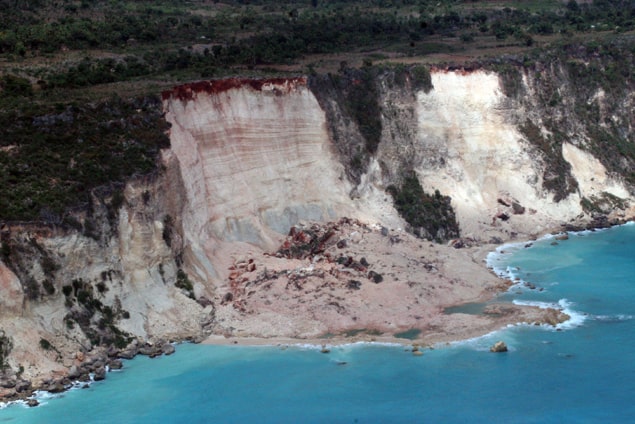
Transport networks and vulnerable communities at the bottom of slopes could benefit from a landslide early warning system that monitors the noise levels within soil. Claimed to be the first of its kind in the world, it works by monitoring sound to establish whether a large-scale slip is imminent so that measures can be taken.
Worldwide, many thousands of people die each year as a result of slope failures and many others are left homeless without access to basic supplies. In more developed countries, the risk to people’s lives tends to be smaller but the impact on the built environment costs billions of dollars to repair each year, and it can be highly disruptive to transport networks. In an attempt to limit this global hazard, the United Nations has drawn up a strategy, which includes a plan to promote the development of early warning systems.
One way to monitor the risk in real-time is to equip a slope with an array of microphones and to “listen” for increased noise levels as soils begin to move. The trouble with this method is that the relatively low frequencies associated with large-scale slope movements can also be produced by a number of other environmental sources – leading to an unacceptable number of false alarms.
But researchers in the UK believe they can offer a more reliable acoustic monitoring system through an interesting spin on the technique. Instead of positioning acoustic sensors directly onto the slope, they place their microphones within steel tubes that are then in-filled with granular material. Then, if slopes do begin to slip, the sounds produced by the jostling granular material are at higher frequencies than those generated by the surrounding soil. The steel tubes act as a waveguide to amplify the sound.
Field trials
To test its device, the team led by Neil Dixon at Loughborough University carried out a series of tests at Hollin Hill, an active landslide in northern England. By comparing its measurements with traditional slope measurements taken using an inclinometer, Dixon’s team says it found strong correlation between acoustic emission and slope displacement. “Hollin Hill provided us with a controlled environment to test our device, the next stage is to trial this on different types of slope and eventually use it as a means of predicting landslides,” explains Dixon.
Vulnerable people are often more exposed to the risk of landslides and other hazards, due to a lack of knowledge or lack of choice
Ed Phillips, Practical Action
In the short term, Dixon’s team is seeking to work with railways, buses and other transport companies, which currently account for more than half of the purchases of landslide monitoring systems in the UK. “At present, most systems require a person to go out into the field to check a monitoring device – we are offering a system that can relay information in real-time, for example a text message,” says Dixon.
If the technique can become established, Dixon hopes that the technology can be transferred to developing countries, particularly to tropical regions where heavy rainfall and earthquake activity can leave slopes vulnerable to failure. Dixon envisages a simplified version of the system where the acoustic microsensors are connected to an audible alarm system rather than an electronic communications network.
The development is welcomed Ed Phillips, a spokesperson at Practical Action, a charity that promotes technology for development, who points out that people in the developing world are often more vulnerable to landslides. “Vulnerable people are often more exposed to the risk of landslides and other hazards, due to a lack of knowledge or lack of choice – for example building their homes on steep slopes.”
More landslides to come
According to many climate researchers, the frequency and extent of landslides could increase dramatically in certain parts of the world in the coming years. “It is fair to say that a changing climate could include more extreme rainfall events, and those in turn could lead to more landslides,” says Tim Lenton, an earth systems researcher at the University of East Anglia, UK.
This is a view shared by Richard Jardine, a geomechanics researcher at Imperial College London. “It will probably be greatest in degrading permafrost regions. The impact may be greatest in high mountain areas – Alps, Andes, Himalayas etc – or in regions with weak rocks and soils, such as parts of Siberia, Alaska or Canada. And also in warmer areas where we have steep slopes and high rainfall already such as Central America, Brazil, or China,” he says.
This research is part of an ongoing project involving Loughborough University and the British geological Survey called: assessment of landslides using an acoustic real-time monitoring system (ALARMS).



